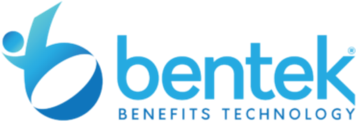Did you know that an average business is spending almost 5 hours (4 hours and 52 minutes) managing payroll? According to Small Business Trends, that’s about 21 days a year! The intricacies involved in benefits administration, particularly around payroll deductions, present a significant challenge for HR departments, especially within the public sector. Manual processes, inherently prone to human error, can lead to inaccuracies that not only affect compliance but also erode employee trust.
Enter automated payroll deduction audits — a beacon of efficiency in the sea of administrative burdens. This innovative solution promises to revolutionize how HR operations manage payroll deductions by enhancing accuracy, ensuring compliance, and reducing the time spent on manual tasks. By embracing automation, public sector HR operations can align more closely with compliance demands and elevate employee satisfaction.
This article will take a deep look into the transformative potential of automated payroll deduction audits. We will explore the role of payroll deductions in benefits administration, unveil the benefits of automation, and provide best practices for implementing automated audits. Whether you’re looking to reduce payroll errors, streamline HR operations, or ensure public sector payroll compliance, the insights shared here will guide you towards achieving operational excellence.
Are you ready to discover how automated payroll deduction audits can streamline your business operations and ensure a more satisfied workforce? Let’s embark on this journey together.
The Role of Payroll Deductions in Benefits Administration
The role of payroll deductions serves as a cornerstone for managing complex benefit programs within the public sector. As we dive into the nuances of this process, it becomes evident that the meticulous management of diverse deduction types—ranging from healthcare premiums and retirement contributions to union dues—demands both precision and adherence to a labyrinth of regulatory requirements.
This section explores the multifaceted role of payroll deductions in benefits administration, underscoring the challenges and the pivotal importance of accuracy for both compliance and nurturing employee trust.
Complexity of Managing Multiple Deduction Types
- Diverse Deduction Categories: Payroll deductions span various categories, each with its nuances. For instance, healthcare premiums require alignment with benefits elected by employees, retirement contributions must comply with specific caps and regulations, and union dues may vary by location and union agreements.
- Regulatory Compliance: The complexity escalates with the need to stay compliant with a spectrum of regulations, including the Affordable Care Act (ACA) and the Family and Medical Leave Act (FMLA). Each regulation adds layers of complexity to payroll deductions, necessitating up-to-date knowledge and meticulous management practices.
- Accuracy and Employee Trust: The stakes of managing these deductions accurately are twofold; first, to ensure legal compliance and avoid penalties, and second, to maintain employee trust. Mismanagement or errors can lead to dissatisfaction, grievances, and a potential erosion of trust in the organization’s ability to manage benefits effectively.
Challenges in Payroll Deduction Management
- Manual Entry Errors: One of the most prevalent challenges in payroll deduction management is the risk of manual entry errors. These errors can stem from simple mistyping to misunderstanding of complex deduction rules, leading to inaccuracies in payroll.
- Miscalculation of Deductions: Beyond entry errors, the miscalculation of deductions poses a significant challenge. This includes incorrect application of deduction rates, failure to update deduction amounts in response to regulatory changes, or errors in calculating prorated amounts for new hires or terminations.
- Evolving Regulations: Keeping abreast of evolving regulations such as ACA and FMLA amendments requires constant vigilance. Each legislative change can necessitate adjustments in payroll deduction management practices, adding to the administrative burden.
Impact of Manual Process Errors
- Financial and Reputational Damage: Errors in payroll deduction management can have far-reaching consequences. Financially, they can lead to significant penalties for non-compliance with regulations. Reputationally, they can damage the trust employees place in their employer’s ability to manage benefits accurately and fairly.
- Statistics Highlighting Error Rates: Research and statistics from reputable sources illuminate the high error rates associated with manual payroll processes. For example, G2 Learning found that manual data entry accounted for 40% of payroll errors. They also stated that companies using payroll automation are 33% more effective. Automation streamlines payroll tasks and reduces errors, helping businesses save time and money
The intricacies of payroll deductions in benefits administration underscore the critical role of precision and regulatory compliance in fostering employee trust and ensuring the financial health of public sector organizations. The challenges highlighted above, from manual entry errors to the complexities of managing evolving regulations, reveal the pressing need for streamlined processes and advanced management practices in payroll deductions.
Best Practices for Automating Audits for Payroll Deductions
Conducting a Thorough Needs Assessment
To ensure the successful implementation of automated payroll deduction audits, it is imperative to begin with a comprehensive needs assessment. This process should identify the specific requirements of your HR operations, including:
- Volume and complexity of deductions: Understanding the variety and complexity of payroll deductions your organization manages, such as healthcare premiums, retirement contributions, and union dues.
- Integration capabilities: Assessing the compatibility of potential automated solutions with your existing HR systems to ensure seamless data exchange.
- Scalability: Selecting a solution that not only meets current needs but can also accommodate future growth and changes in regulation.
Ensuring Data Security
The protection of sensitive employee information stands at the forefront of implementing automated payroll systems. Key considerations include:
- Encryption and compliance: Opt for solutions that offer robust data encryption and comply with industry standards and regulations.
- Access controls: Implement strict access controls to ensure that only authorized personnel can view or modify payroll information.
- Regular security audits: Schedule periodic security assessments to identify and rectify potential vulnerabilities.
Comprehensive Training for HR Staff
To maximize the benefits of the new automated payroll deduction audit system, thorough training for HR staff is essential. Effective training programs should cover:
- System functionalities: Equip staff with the knowledge to utilize all features of the new system efficiently.
- Troubleshooting common issues: Prepare staff to handle common problems that may arise during payroll processing.
- Best practices for data entry and management: Ensure accuracy and consistency in data handling to reduce the risk of errors.
Adopting a Phased Implementation Approach
A phased approach to implementing automated payroll deduction audits minimizes operational disruptions and facilitates smoother transition, involving:
- Pilot testing: Start with a small, controlled group to identify potential issues and gather feedback.
- Gradual rollout: Expand the implementation incrementally, allowing time for adjustments based on initial experiences.
- Feedback loops: Establish mechanisms for collecting and addressing feedback from users at each stage of the rollout.
Ongoing System Evaluation
To ensure the long-term success of automated payroll deduction audits, continuous evaluation is crucial. This includes:
- Performance metrics: Regularly review system performance against predefined metrics to assess efficiency gains and error reduction.
- Regulatory compliance: Stay abreast of changes in payroll-related regulations and ensure the system remains compliant.
- User satisfaction: Solicit feedback from HR staff and other system users to identify areas for improvement and enhance user experience.
By adhering to these best practices, organizations can effectively implement automated payroll deduction audits, resulting in enhanced accuracy, compliance, and efficiency in their HR operations.
Transformative Potential of Automating Audits for Payroll Deductions
The journey towards refining HR operations, especially in the public sector, demands a strategic pivot to embrace technological advancements. Automated payroll deduction audits represent a significant leap forward in this direction. The potential for transformation lies not just in the automation of processes but in the foundational reimagining of payroll management.
This evolution in HR and Payroll operations promises a future where errors dwindle, compliance is a given, and HR professionals can allocate their expertise to strategic areas that enhance employee satisfaction and engagement.
Reduction of Errors
Automated payroll deduction audits stand as a safeguard against the perennial issue of human error in payroll processing. By entrusting calculations to sophisticated algorithms, the accuracy of deductions for healthcare premiums, retirement contributions, and other benefits sees a marked improvement. This precision:
- Eliminates costly mistakes that can affect both the organization’s finances and employee trust.
- Ensures consistent compliance with ever-evolving regulations, thereby protecting the organization from potential fines and legal challenges.
Time Savings
The adoption of automation in payroll processes carves out significant time savings for HR departments. This liberation from the manual entry allows HR professionals to:
- Redirect efforts towards more strategic initiatives that contribute to organizational development and employee well-being.
- Enhance responsiveness to employee inquiries regarding payroll, thereby boosting HR’s service delivery and support functions.
Enhanced Compliance
Staying abreast of regulatory changes and ensuring adherence to them is a critical component of payroll management. Automated systems:
- Stay updated with the latest regulatory requirements, incorporating changes seamlessly into the payroll process.
- Provide detailed audit trails, making it easier to demonstrate compliance during external audits or reviews.
Operational Efficiency and Regulatory Adherence
The strategic investment in automated payroll deduction audits underscores a commitment to operational excellence and regulatory adherence. This perspective:
- Views technology as an enabler of enhanced efficiency and accuracy in payroll processes.
- Acknowledges the dynamic nature of regulatory landscapes and positions the organization to adapt swiftly and effectively.
Fostering a Satisfied and Engaged Workforce
At the heart of streamlined HR operations is the well-being and satisfaction of the workforce. By ensuring accurate and timely payroll processing, organizations:
- Build trust among employees, affirming that their contributions are valued and their financial compensations are handled meticulously.
- Empower employees by providing them with real-time access to their payroll data and benefits information, fostering a transparent and inclusive work environment.
HR leaders stand at the forefront of transformation, armed with the power of automation to redefine payroll management. The adoption of automated payroll deduction audits is not merely a tactical move but a strategic investment in the future—a future where HR operations are not just efficient but also resilient, compliant, and aligned with the ethos of employee satisfaction and engagement.
For more articles like this, check out the Bentek Blog!




